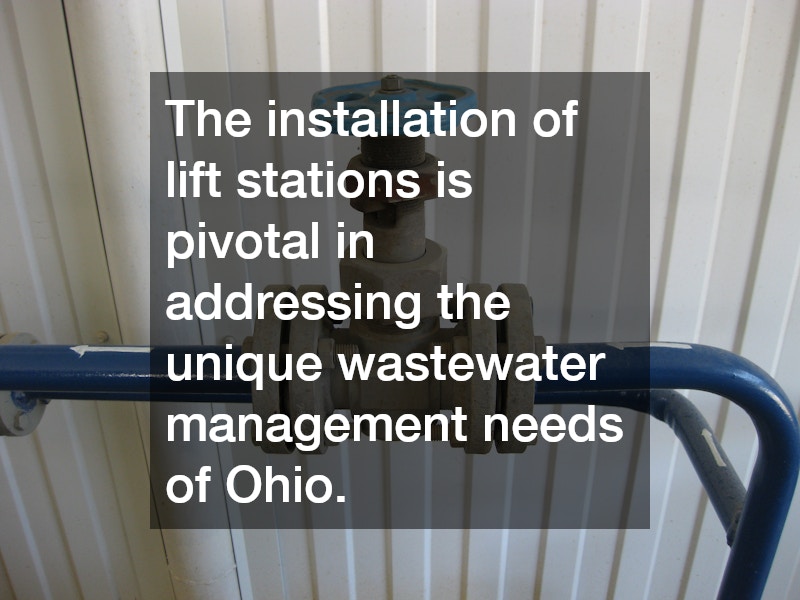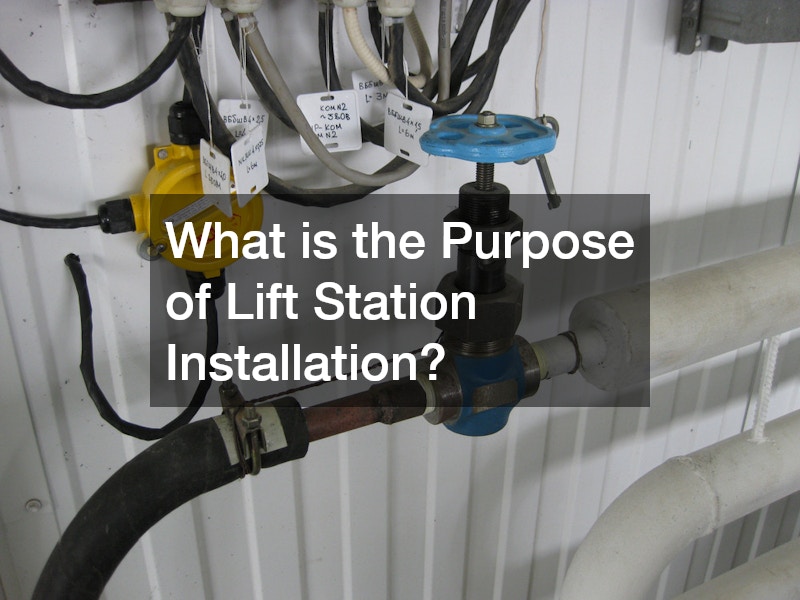Lift station installation in Ohio plays a crucial role in the overarching framework of wastewater management systems. These systems not only safeguard environmental health but also support public infrastructure. The installation of lift stations ensures the efficient movement of wastewater in areas where natural gravitational flow is inadequate.
How Does a Lift Station Work?
Understanding the Components
The primary components of a lift station include pumps, valves, and electrical control systems, each playing a unique role. Pumps are at the heart of the operation, responsible for moving wastewater upwards to a higher elevation. Valves regulate flow and pressure, while the electrical systems coordinate their actions to maintain seamless operation.
Electrical systems provide the necessary automated controls to ensure reliable functioning. These components work in harmony to overcome gravitational challenges that impede wastewater movement. In Ohio, lift station installations are particularly beneficial due to the varying topography.
The integration of sensors and feedback mechanisms allows real-time monitoring and adjustments. This setup not only enhances operational efficiency but also extends the lifespan of the system. Accurate data collection and automated responses are pivotal in preventing potential system failures.
The Pumping Process
The pumping process of lift stations is a carefully coordinated sequence utilizing both mechanical force and gravity. Initially, wastewater is collected in wet-wells where the level is monitored. When the wastewater reaches a predefined threshold, pumps activate to transfer it to a higher elevation.
As the pumps operate, wastewater is propelled through a piping system designed to overcome elevation changes. This process is crucial, as gravitational flow alone cannot transport wastewater in areas with challenging terrain. As a result, the pumping process ensures continuous flow to treatment facilities.
The transition from collection to pumping is managed through advanced control systems. These systems activate valves and pumps based on real-time conditions. This responsive mechanism is essential for maintaining system integrity and ensuring environmental compliance.
Control Systems
Control systems are pivotal for the efficient operation of lift stations and involve sophisticated technology. They use sensors to collect data on wastewater levels and system performance, allowing for proactive decision-making. Automation in these systems reduces the need for manual intervention, increasing reliability and reducing operational costs.
Advanced control systems in lift stations can predict maintenance needs, preventing unexpected shutdowns. The use of programmable logic controllers (PLCs) enables precise control over pump operations. This technology ensures that lift stations operate optimally even under high-demand situations.
Why is Lift Station Installation Important in Ohio?
Geographical Concerns
Ohio’s diverse topography, consisting of both elevated and low-lying areas, presents unique challenges for wastewater management. In many regions, gravity alone is insufficient to move wastewater, making lift station installation essential. This ensures consistent wastewater transport across all elevations.
Low-lying areas are particularly vulnerable, potentially creating bottlenecks in the wastewater flow. Lift stations help alleviate these geographical constraints by providing the necessary lift to transport wastewater efficiently. As a result, municipal systems can reliably meet the demand for continuous wastewater movement.
Regulatory Compliance
Ohio mandates stringent regulations for wastewater management to protect the environment and public health. Lift station installations are integral to helping municipalities adhere to these requirements. They provide the infrastructure necessary to meet state and federal waste management standards.
Failure to comply with these regulations can result in significant penalties and environmental harm. Lift stations are designed to minimize these risks by ensuring consistent wastewater transport to treatment facilities. Continuous operation through robust design and maintenance is key to compliance.
Environmental Impact
Lift stations provide a significant environmental benefit by preventing wastewater overflows, which can contaminate local water bodies. By managing the flow of wastewater efficiently, these installations mitigate the risk of environmental pollution. This proactive approach is crucial for maintaining the integrity of Ohio’s ecosystems.
The proper installation and maintenance of lift stations help protect the drinking water sources from contamination. They act as a buffer against overflow incidents that may result from heavy rainfall or system malfunctions. Ensuring efficient wastewater transport reduces environmental footprint and preserves natural resources.
In conclusion, the installation of lift stations is pivotal in addressing the unique wastewater management needs of Ohio. These systems ensure efficient operation through their components, strategic pumping processes, and advanced control systems. By mitigating geographical challenges, ensuring regulatory compliance, and minimizing environmental impacts, lift stations are indispensable to maintaining health and safety standards in Ohio’s communities.
.

